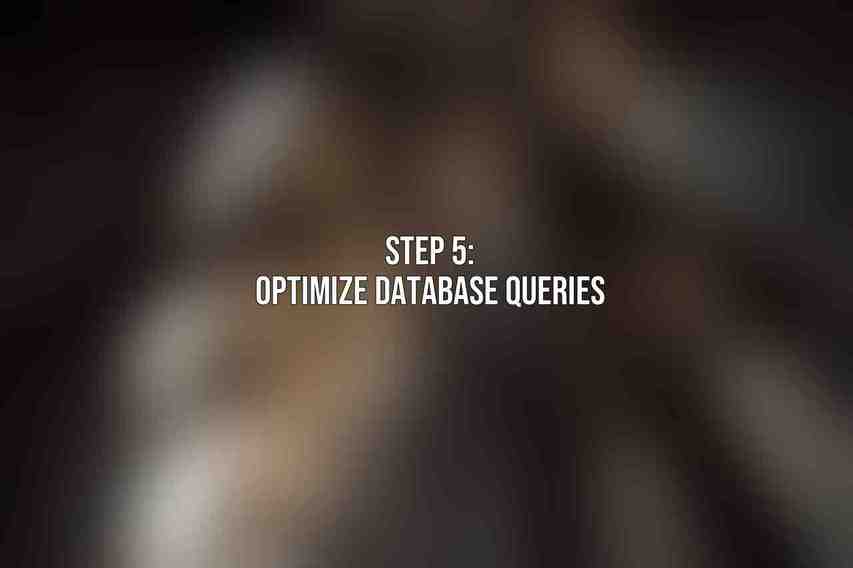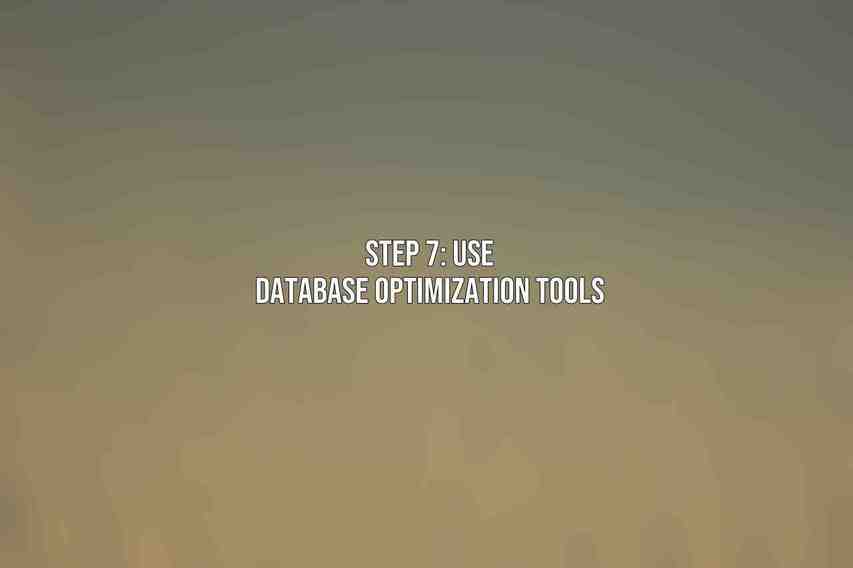where web users expect lightning-fast loading times, optimizing your WordPress website’s database for speed has never been more crucial. The database is the backbone of any WordPress site, storing all its content, settings, and configurations. Database optimization plays a pivotal role in ensuring your website runs smoothly and efficiently.
When it comes to website performance, every second counts. A well-optimized database can lead to significant improvements in page load times, user experience, and even search engine rankings. By streamlining your WordPress database, you not only enhance speed but also reduce the risk of data corruption and enhance overall security.
Step 1: Backup Your Database
Before diving into any optimization process, it is imperative to back up your WordPress database. This precautionary measure ensures that in case anything goes wrong during the optimization process, you can easily restore your site to its previous state. There are various methods to backup a WordPress database, including using plugins like UpdraftPlus, BackWPup, or manually through phpMyAdmin.
Step 2: Clean Up Unnecessary Data
Over time, WordPress databases can get cluttered with unnecessary data that can slow down your site. Cleaning up elements like post revisions, caches, spam comments, trash, and unused plugins and themes can significantly reduce the database size and improve performance. Regularly purging these elements will keep your database lean and efficient.
| Type of Data | Importance |
|---|---|
| Post Revisions | Automatically saved drafts that can bloat the database over time |
| Caches | Cached files that may become outdated and occupy valuable space |
| Spam Comments | Unapproved comments or trackbacks that contribute to database clutter |
| Trash | Deleted content that still resides in the database |
| Plugins and Themes | Unused themes and plugins can leave behind unnecessary data |
Step 3: Optimize Database Tables
Optimizing your database tables involves analyzing the database structure, identifying bloated or redundant tables, repairing any corrupt or fragmented tables, and optimizing table structures for better performance. Tools like phpMyAdmin or plugins such as WP-Optimize can assist in automating this process.
Step 4: Use a Caching Plugin
One of the most effective ways to reduce database load and improve website speed is by utilizing a caching plugin. Caching plugins generate static HTML files of your dynamic WordPress site, reducing the need to query the database with every request. Popular caching plugins like WP Super Cache, W3 Total Cache, and WP Rocket offer a range of features to optimize website performance.
Step 5: Optimize Database Queries

Efficient database queries are essential for fast loading times. By writing optimized SQL queries, using indexes to improve query performance, and avoiding slow queries, you can minimize database load and enhance responsiveness. Tools like Query Monitor can help in identifying and optimizing inefficient queries.
Step 6: Manage Database Size
Limiting the number of database entries and regularly deleting unnecessary data are key practices in managing database size. Consider using external data storage solutions for media files and heavy content to reduce the burden on your core database.
Step 7: Use Database Optimization Tools

There are several specialized tools designed to streamline database optimization for WordPress websites. Tools like Wp-Optimize, Clean My WP, WP Rocket, and Query Monitor offer features to clean up the database, optimize queries, and monitor performance effectively.
Step 8: Monitor Database Performance
Regularly monitoring database performance is crucial to ensure ongoing optimization. Metrics such as query time, table size, and database load can provide insights into the health of your database. Tools like New Relic, MySQL Workbench, or built-in WordPress monitoring plugins can help in tracking performance metrics.
Step 9: Additional Tips
In addition to the core optimization steps, there are several additional tips to further boost your WordPress website’s performance:
- Enable GZIP compression to reduce file sizes and improve loading speed.
- Utilize a content delivery network (CDN) to distribute site content globally and reduce server load.
- Consider hosting on a managed WordPress platform that offers optimized server configurations.
- Regularly update WordPress core, themes, and plugins to ensure compatibility and security.
optimizing your WordPress database is a crucial step in enhancing website speed and performance. By following these step-by-step optimization techniques, you can ensure that your site runs efficiently, loads quickly, and provides an optimal user experience. Remember, database optimization is not a one-time task; regular maintenance and monitoring are key to sustaining peak performance levels.
By incorporating these strategies into your website maintenance routine, you can enjoy the benefits of a well-optimized WordPress database – improved speed, better user engagement, and higher search engine rankings. Stay diligent in your optimization efforts, and you will undoubtedly see the rewards in the form of a faster, more responsive website.
Frequently Asked Questions
What is WordPress database optimization?
WordPress database optimization is the process of improving the performance and speed of a WordPress website by cleaning and streamlining the database to reduce load times and improve overall site performance.
How does database optimization help improve website speed?
Database optimization helps improve website speed by reducing the amount of unnecessary data stored in the database, resulting in faster access to essential information when a user visits the website.
What are some common techniques for optimizing a WordPress database?
Common techniques for optimizing a WordPress database include cleaning up unused data, removing unnecessary plugins and themes, running regular maintenance tasks such as deleting post revisions and optimizing database tables.
How often should I optimize my WordPress database?
It is recommended to optimize your WordPress database regularly, ideally every few months, to ensure optimal performance and speed of your website. However, the frequency may vary based on the size and activity of your website.
Is it necessary to backup my database before optimizing?
Yes, it is crucial to backup your WordPress database before performing any optimization tasks to avoid the risk of data loss. You can use plugins or manual methods to create backups before proceeding with optimization.
